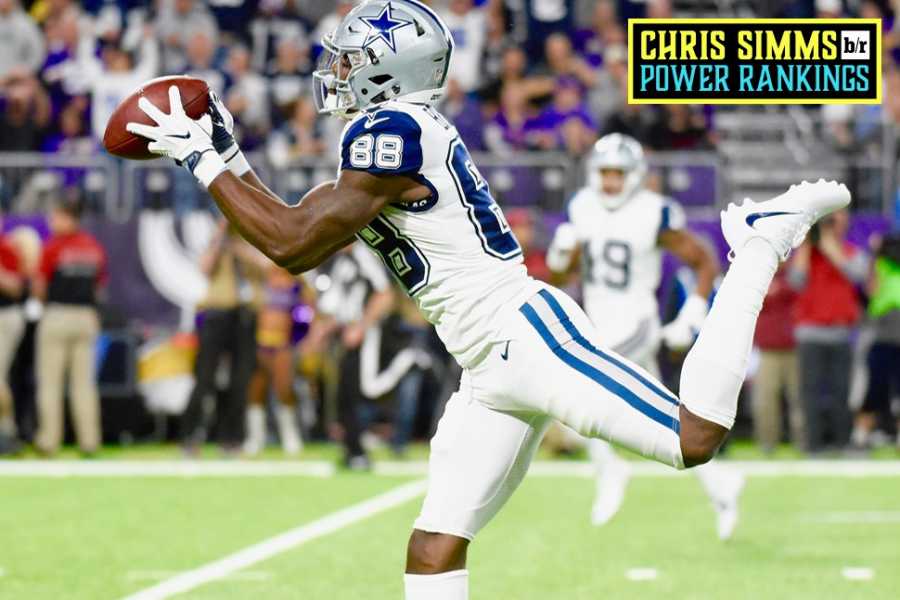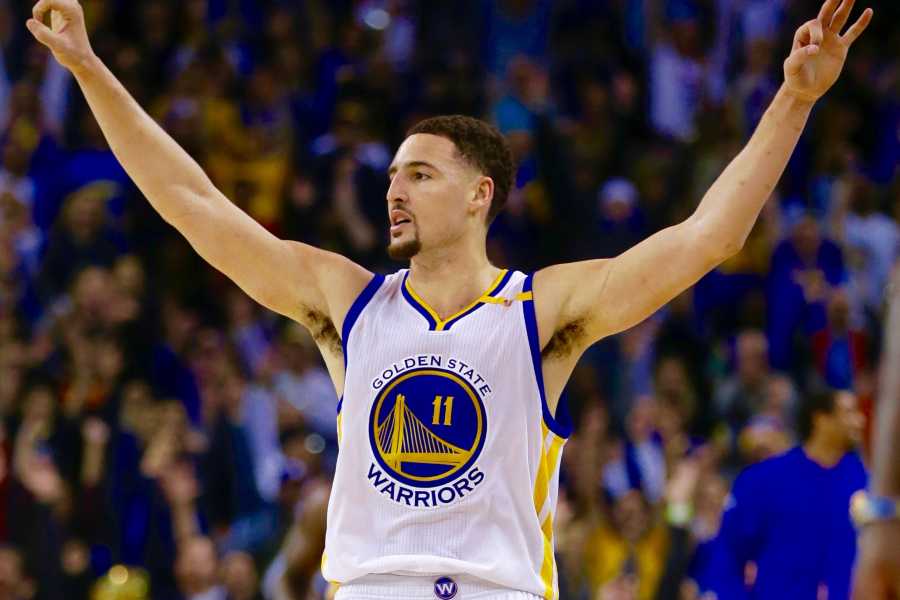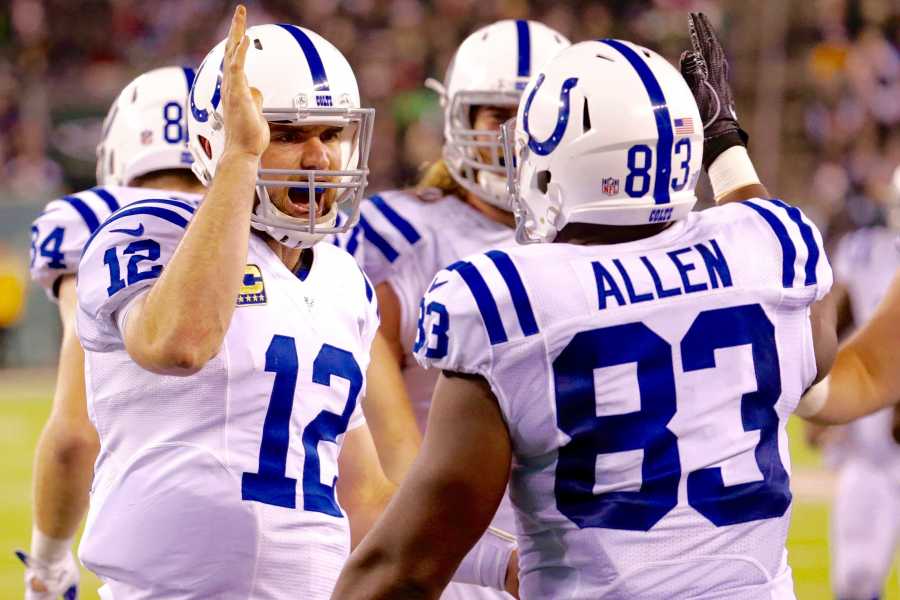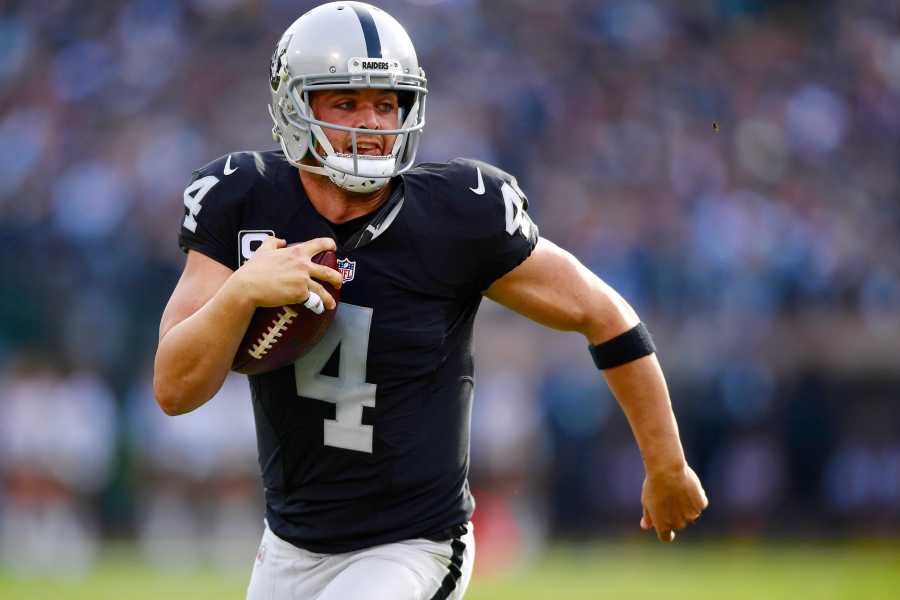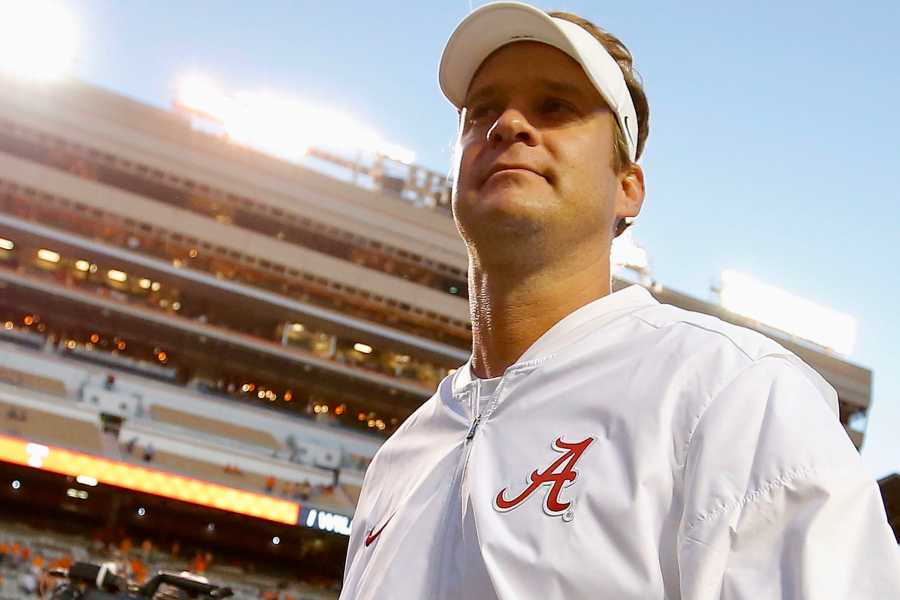David Johnson wears anti-bullying cleats prior to a game against Washington at University of Phoenix Stadium on December 4, 2016 in Glendale, Arizona. (AP Images)
Bruce Arians will never forget his first David Johnson moment.
In Week 2 of the 2015 season, the Cardinals traveled to Chicago. Arians knew Johnson had arresting potential—he'd seen it come to life seven days earlier when Johnson took his first NFL touch into the end zone—but he wasn't sure if his rookie runner could be a franchise-building back.
Arians watched Johnson jog onto Soldier Field to receive the opening kickoff. As Johnson neared the goalpost, he looked into the stands and spotted several of his old friends from Clinton, who had made the two-and-a-half-hour drive. His mom was there too. Tightening his chin strap, Johnson nodded at them as they screamed his name.
He caught the ball eight yards deep in the end zone, and then it was magic: He started sprinting like he was Gale Sayers.
Johnson veered slightly to his right as he crossed the 10-yard line. At the 25, he cut to his left, burst through an opening and made the jump to hyperspace. On the sideline, Arians was hypnotized as he watched his rookie run untouched into the end zone for a 108-yard return, the longest play in Cardinals franchise history and tied for the second-longest kickoff return in NFL history.
"That was when I really knew we had a difference-maker in David," Arians says. "The game just comes so naturally to him. He has as much deceiving speed as anyone I've seen."
As Johnson cantered back to the sideline, he looked up into the grandstands and saw his crew from Clinton. They were yelling as if they'd seen the rapture.
✦ ✦ ✦
Playing high school football in the small river town of Clinton—on the western shore of the Mississippi—David attracted little attention from big-time colleges. How unknown was he? David received a letter at his home from then-Iowa State coach Paul Rhoads that was addressed to "David Jacobson."
David met with Iowa coach Kirk Ferentz, who was blunt in his assessment of his play. "You're not giving enough effort when you don’t have the ball in your hands," Ferentz told David. "You look disinterested out there."
David watched game film to see if Ferentz's analysis was correct. He was shocked at what he saw. "He was right," David says. "I kept seeing myself on film watching the ball. I needed to block more and carry out my fakes. Basically, I needed to be a guy who wasn't lazy."
Only two schools offered him a scholarship: Northern Iowa and Illinois State. David chose Northern Iowa, 146 miles away in Cedar Falls. In the late '90s, Kurt Warner had risen from the tiny FCS school to reach the NFL, and David was determined to follow the quarterback's trail.

David Johnson (No. 7) jumps up and over defensive back Sam E. Richardson (No. 4) during a game against Iowa State at Jack Trice Stadium on August 31, 2013, in Ames, Iowa. (Getty Images)
Days after graduating from Clinton High, David and his mother packed his stuff into her Ford Bronco and began the trip to Cedar Falls. But before they reached David's new home, the Bronco sputtered to a stop on Highway 30, the engine dead. In a panic, David called his high school coach, Lee Camp, who picked up his star player a few hours later and helped him move into his dorm room.
"David was so nervous about being late for his first meetings at Northern Iowa," Camp says. "He's big into first impressions—anyone watching him in the NFL knows that—and it really bothered him that he got behind schedule."
In Cedar Falls that summer, David went to work—as an asbestos remover. Beginning at 6 a.m. each weekday and ending at 3 p.m., he donned a protective suit and mask and scraped away at what he said looked like "black tar" in buildings on the Northern Iowa campus. The money was good—$13 an hour—but there was one small hazard: Johnson was told during training that he could develop lung disease in 25 years.
"Those days of working on that asbestos crew were so long, especially because we'd go and lift weights for two-and-a-half hours after we were done," says Xavier Williams, a nose tackle for the Cardinals who attended Northern Iowa and worked with Johnson in the summers. "Those were the hardest days of my life, man. We'd eat gas-station hamburgers for our lunch. If you had seen us back then you'd never have thought we'd ever make it to the NFL."
Once on the field, David remembered the slights from his state's schools. In 2013 against Iowa State, he scored four touchdowns in the Panthers' 28-20 win. A year later against Iowa, he was clearly the best player on the field, finishing with 237 all-purpose yards and a touchdown in a 31-23 loss to the Hawkeyes.
"Yeah," David says, "I had just a little bit to prove in those games."
✦ ✦ ✦
A.Q. Shipley will never forget his first David Johnson moment.
With just over six minutes to play in the third quarter against the Bears in September 2015—about two hours in real time after Johnson had raced 108 yards on the kickoff return—the Cardinals faced a 2nd-and-9 on Chicago's 13-yard line. Johnson lined up six yards behind the quarterback.
Shipley snapped the ball to Palmer, who pitched it to Johnson on a simple sweep left. Running behind a pulling Shipley, Johnson darted to the outside, juked a Bears safety at the 10—Johnson swatted him away like a fly—and then loped into the end zone.
"You knew on his first NFL carry that he was going to be good, just by the way he let the linemen set up the blocks and then just how easy the game seemed to come to him," Shipley says. "He's going to be a force in this league for a long, long time."
The 13-yard run was freighted with history: Johnson became the first NFL player to score a touchdown rushing, receiving and on a kickoff return in his first two games. His jersey and cleats from the Chicago game now reside in the Hall of Fame.
After the Cardinals' 48-23 victory, Johnson met his mom and childhood friends outside the locker room. What a sweet moment it was, Johnson hugging and high-fiving those who mattered most to him—those who knew how far he had come.
✦ ✦ ✦

David Johnson runs past cornerback Tramaine Brock during a game against the San Francisco 49ers at University of Phoenix Stadium on November 13, 2016, in Glendale, Arizona. (Getty Images)
He was a record-breaking phenom at Northern Iowa, setting 15 school marks, including most career rushing yards (4,682) and touchdowns (63). Many NFL draft analysts pegged him as a second-round pick.
On draft day, the Cardinals staff thought they had landed their running back of the future in the second round. Arians, sitting in the Cardinals draft war room in Tempe, was on the phone with Nebraska's Ameer Abdullah as Arizona's time to make the 55th overall selection approached.
But as Arians was telling Abdullah how excited the Cardinals were to have him, Abdullah received another call. Hang on, Coach.
At the last moment, Detroit, picking one spot before Arizona, decided to make Abdullah a Lion. Arians and Cardinals general manager Steve Keim looked at each other in disbelief. "You're kidding me," Keim said. "Golly, you gotta be kidding me." Four-letter words were then uttered.
"It's been a long road for me to get here, and I know I have to keep fighting like crazy to get better. But everything I've gone through in my life has prepared me for this."
In the third round, with the 86th pick, Arizona moved to Plan B: Johnson. "We had watched what David had done against Iowa, and we knew he'd be a great fit for us," Arians says. "It was a no-brainer. He's so big and fast and can catch the ball. Plus, his maturity level was just so high. You never have to worry about his work ethic."
Not even Arians, though, suspected what the Cardinals were getting: a player who, two years later, would become the dream of every fantasy owner in America.
✦ ✦ ✦
It's a sunny autumn afternoon in Tempe, and the Cardinals are finishing a walkthrough practice. One of the last players on the field is Johnson, who is pressing his coaches for details about his assignment on a certain play.
Johnson became the full-time starter at running back last December after injuries to Andre Ellington and Chris Johnson. He finished the final five weeks of the season leading all NFL players with 658 total yards. So far in 2016—a season that has been shrouded in disappointment for the 5-6-1 Cardinals—Johnson is on pace to do what has never been done before: gain 100 total yards in every game.
"You can't appreciate how good David is until the pads are on and everyone is going full speed," Shipley says. "He's so sudden and explosive with the ball in his hands, and he always is falling forward after contact. Even if he's hit at the line, he’s still going to get two yards."
"It's been a long road for me to get here, and I know I have to keep fighting like crazy to get better," Johnson says as he walks off the practice field. "But everything I've gone through in my life has prepared me for this. Hopefully I'm just getting started."
The triplet who is now a rising star in the NFL then jogged into the team complex, afraid he'd be late to a team meeting.



